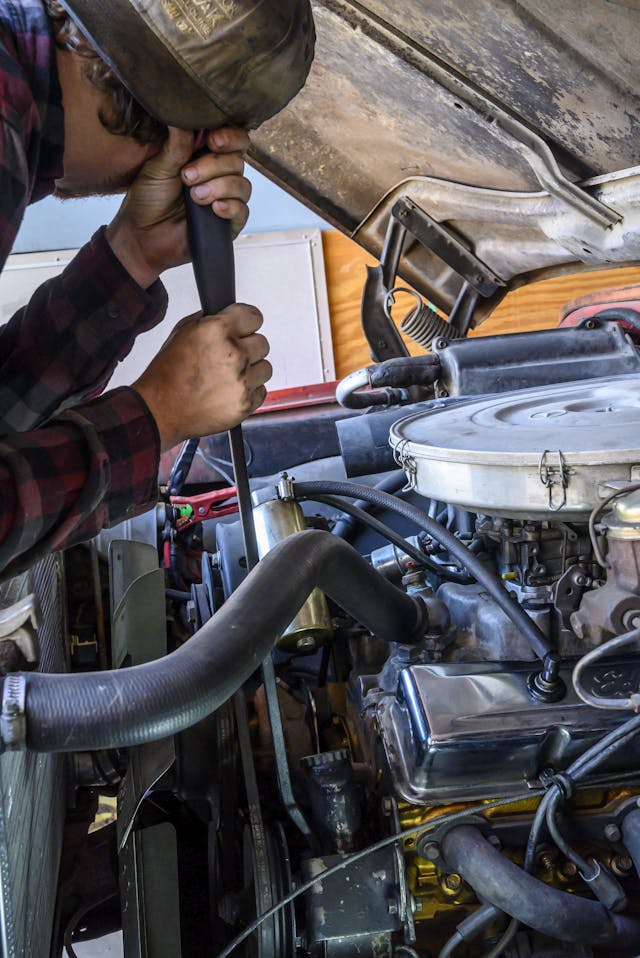Wrenchin’ Wednesday: Three ways to find THAT sound
We’ve all heard it: that sound that just doesn’t match any sample in your head. It seems to come and go on a whim—maybe if everything else was a little bit quieter it would be obvious what’s crying for help beneath the mechanical symphony created by a running engine.
That’s where today’s Wrenchin’ Wednesday comes into play. Here are three different ways to diagnose noises and discover problems before they escalate into catastrophic failures.
Mechanic’s stethoscope

There’s no better way to look like you know what you’re doing than to hang a stethoscope from your ears like Dr. House (and for less than $10, usually). A mechanic’s stethoscope operates on the same principals as a doctor’s version: A small diaphragm amplifies vibrations that travel up the needle-like probe and pipes them to your ears like a small speaker. These are fantastic for tracking mechanical noises, since the pinpoint shaft allows you to pick precisely where you want to listen and the sensitive diaphragm brings the smallest tick to the front of the auditory stage. Listening to individual injectors, tracing valvetrain noises, or even probing the lower end of an engine block to catch a whisper of rod knock is where stethoscopes shine.
A word of caution when wearing the ear-buds: Be careful to not smack the probe around. That delicate little diaphragm can take a faint tap off a frame rail and blow out your ear drums.
Heater hoses

If you thought pulling out a stethoscope made you look like an expert, grabbing a heater hose will simply make you look like a mad man to most people—but hear us out. Anyone who’s yelled down a playground sound pipe or a long tunnel knows that sound can travel quite far when it’s isolated from the surrounding world. While most of the bad sounds you’ll detect are caused by mechanical failures, exhaust leaks and other sounds created by leaking air can be particularly tricky to hunt.

A large-diameter heater hose can be used as a flexible sound pipe, making it perfect for tracking down noises that aren’t physically vibrating through the vehicle (and thus, sounds less likely to be picked up by a stethoscope). Cup one end of the hose with your hand and bring it to your ear while using the opposite end to explore the engine bay. With exhaust leaks, for example, this trick allows you to virtually place your ear almost anywhere in the engine bay and isolate yourself from the general under-hood cacophony.
The tools you already have

This last trick makes use of the same principals as the previous two. At the end of the day, a stethoscope simply transmits vibration from one place to another, a task that any solid tool can fulfill. Pry bars, long-shank screwdrivers, broom handles, Panhard bars—just about anything can be used as an impromptu stethoscope to quickly expose a problem. As with the heater hose, cup the handle up to your ear to help isolate ambient noise and listen through the tool for the noise and vibration it’s tracing.
While a socket extension lacks the sensitivity of a stethoscope, you can still use it—or whatever else is on hand—to isolate failures like a dying power steering pump, thus saving yourself time and trouble without running to the store for a specialized diagnostic tool.


